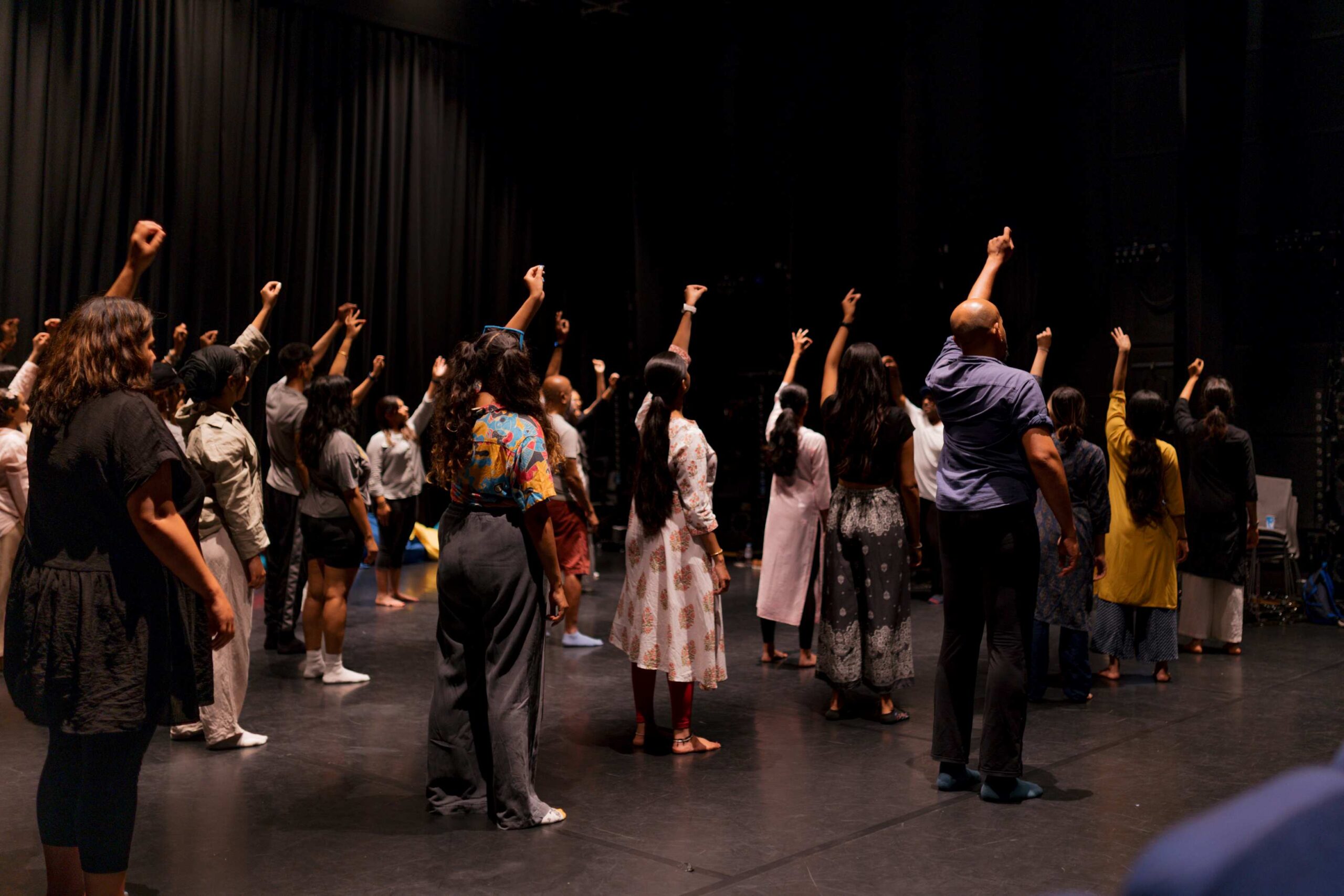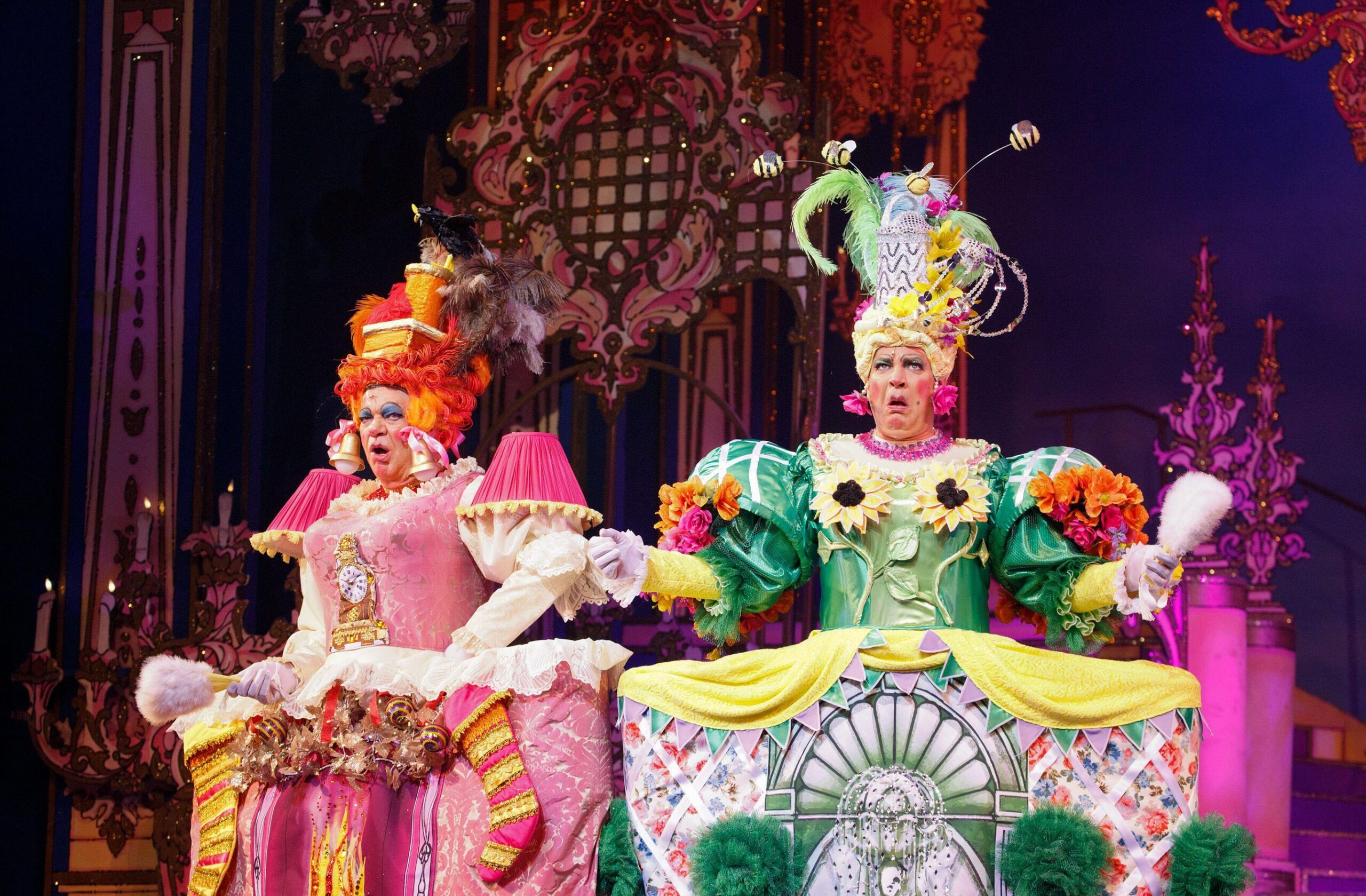Discover key insights from a South Asian artist residency and the benefits of participating in an artist residency as an actor.
An artist residency is a temporary program where an organisation will typically facilitate an artist with the space and time to freely explore their creative ideas. Some residencies will provide the artist with accommodation, offer financial support and even cover travel costs.
Artists are encouraged to create and develop their craft, though they might have to work within certain guidelines. The schedule of the residency is then set up with a goal in mind and the artist is provided with the materials and support they need to explore the subject freely.
Recently, I attended an artist residency at the Birmingham Hippodrome, organised with support from Creatives Hippodrome – a free membership program that provides rehearsal space, theatre discounts and access to networking and social events for artists based in the West Midlands.
The residency marked the start of South Asian Heritage Month and invited South Asian artists to take part in workshops for acting, writing, directing and movement-based disciplines. The program was designed to create a safe environment to explore ideas and take part in workshops run by South Asian artists working in the industry to encourage creative development.
What Happens During an Artist Residency?
Artist residencies can last anywhere between a few days to a few months, depending on the type.
The residency I took part in for South Asian artists was called ‘Connect’ and took place over a weekend. Each day was divided into a morning and afternoon session, plus lunch.
Before the first workshop, we introduced ourselves and warmed up by playing games. The workshops included ‘Creativity, Connection and Collective’ action with Aksa Saghir, ‘Directing Theatre’ with Sameena Hussain, ‘Movement in Theatre’ with Shane Sambu and ‘Playwrighting’ with Sonali Bhattacharyya – all led by professionals with heritage from the South Asian diaspore.
For this type of residency, we were given the choice to opt in or out of specific workshops. Each day was then capped with a reflection and discussion session, where we shared our thoughts on the day’s work.
The environment itself offered flexibility. We were able to step out of the workspace for any reason if we needed to and were given adequate breaks. This facilitated a safe, creative space so that we could participate in our best form.
There’s also a social aspect to an artist residency that can feel overwhelming. Although networking can feel like engineering a professional relationship, a residency is set up in a way that allows organic relationships to form.
During my time at Connect, I was able to meet artists from multiple disciplines, and we shared a mutual interest in each other’s work. A residency alleviates the pressure of networking and offers you the time to have genuine conversations. You can approach people authentically and connect without expectation, creating a ‘community’ as opposed to a ‘network’.
At the end of the residency, we wanted to stay in touch and support one another. We identified ways of creating a community, sharing ideas on what that could look like, and were offered support from the residency organisers.
It was important to be honest during these sessions. Some workshops worked better for some people than for others. Many artists were actors and felt that a workshop about the craft of acting would be beneficial for the next Connect. Giving feedback allowed us to speak openly about how our excitement and inspiration could take shape in the future.
What I Learned From My South Asian Artist Residency
Connect was free and allowed for an environment free from pressure and cultural adaptation. My experience was invaluable, and I know it was for many others who attended, too.
Below, I’ve reflected on the top 10 things I learned during my experience, which will hopefully encourage you to take part in your own artist residency:
- Showing up with an open mind and the curiosity to explore is the best way to feel creatively fulfilled during an artist residency. It allows you to leave expectations at the door and really offer yourself over to the experience.
- The workshops and classes that intimidated me at first were actually the most enjoyable to take part in. The workshops on directing and playwriting helped deepen my understanding of acting and I had a lot of fun trying something new!
- Everyone you’ll meet has something unique to offer – as do you. Share your experiences, get to know one another, and try to socialise as much as you can.
- I met more South Asian artists than I expected to, working across multiple disciplines. South Asian people are still one of the lowest-represented groups across all media. Being in a room with other South Asian artists and being taught by South Asian professional directors, writers and choreographers helped to inspire the work we’re in pursuit of.
- Even if I feel disconnected from my heritage sometimes, I feel most welcomed by the spaces that are made for me. The residency allowed South Asian artists to share their experiences in an environment designed for us.
- Creating a community is the best way to uplift other South Asian artists. Having a network of people who support your work and are there for you to reach out to or share ideas with is incredibly helpful for navigating the industry.
- When I feel frustrated by the endless auditions and rejections that come with being an actor, rediscovering my creativity away from the need to ‘produce’ is how I can replenish my artistic energy and inspiration.
- I have to create from a place of inspiration and excitement and not worry too much about what will be ‘good’ or ‘marketable’. If I’m excited about my work and committed to its message, I can offset a creative career that I am proud of.
- I realised there was a shared sense of concern about opportunities for South Asian actors. I listened to these conversations and considered how I could help, making a commitment to sharing support where I can.
- Shifting my mindset from ‘scarcity’ to ‘abundance’ is the first step in improving my confidence towards the work as an actor. Having an abundant mindset can encourage the universe to invite in the right opportunities.
Taking part in an artist residency that was curated in this way helped me to understand how important programs like these are, especially for marginalised groups. We started to build the beginnings of a community by having conversations about the work and how to facilitate our creativity.
In addition, a recurring conversation among the artists was the need to take inspiration from within the residency out into the industry. We need to bring the ideas we had beyond the studio space to keep the conversations going about how to reach our goals and pursue our bigger dreams. The post-residency stage is where the creative work can really begin to unfold. Making those connections for professional development is the start of making those dreams, big or small, a reality.
An artist residency is beneficial for anyone who needs the time to explore. Find a program that suits your needs and is set up in a way where you can work freely without hindrance. Some residencies offer sponsorship or have specific guidelines and it might take some research into what will work for you before you take part.
My personal experience rejuvenated my creativity and connected me to so many other South Asian artists I hadn’t met before. It was the best possible way to celebrate South Asian heritage month and an invaluable experience as an actor.
Take a look at our website for more industry news and acting advice.
 Karen is a British actor of south Asian descent, born and raised in Birmingham, England. She is a graduate of The American Academy of Dramatic Arts in Manhattan, New York. Most notably known for her role as Nicole Shelley in the award winning Apple TV+ series Ted Lasso starring opposite Jason Sudeikis, Hannah Waddingham, Brett Goldstein and Nick Mohammed. She also played Noreen Khan in the first two seasons of the BBC television series Phoenix Rise.
Karen is a British actor of south Asian descent, born and raised in Birmingham, England. She is a graduate of The American Academy of Dramatic Arts in Manhattan, New York. Most notably known for her role as Nicole Shelley in the award winning Apple TV+ series Ted Lasso starring opposite Jason Sudeikis, Hannah Waddingham, Brett Goldstein and Nick Mohammed. She also played Noreen Khan in the first two seasons of the BBC television series Phoenix Rise.
In Theatre, Karen starred in Ayad Akhtar’s The Who and the What at The English Theatre of Hamburg in Germany and performed opposite Scottish actor Alan Cumming in the original musical Me and the girls directed by Tony award winner Douglas Carter Beane. She has also played leading roles in regional premieres of David Harrower’s Blackbird and Duncan Macmillan’s People, Places and Things. In 2022 she was directed by Iqbal Khan in Mismatch at The Birmingham Rep as part of the Sky Comedy Rep Festival. Her other credits include lead roles in Camel written by Charly Clive, Welcome to Thebes, As you like it, Lysistrata, 4.48 Psychosis, The Tempest, Good Fit, She Kills Monsters, American As, Julius Caesar for The Public Theater at Shakespeare in the Park and Journey to America at the world famous Carnegie Hall, New York.
Karen’s selected work on film includes starring in The Waves for MTV Entertainment directed by BAFTA award winner Sindha Agha, Man on the Phone for Red Bear Films and Frank’s Plan for Amazon Prime. She has also appeared in commercials for Aramco, WhatsApp with Alex Scott, TK Maxx, West Midlands Combined Authority and Northwell Health Insurance in New York. She recently performed at the An Tain Arts Centre in Dundalk, Ireland in Why are you here? Directed by Paul Hayes.
Headshot credit: Andy Brown





